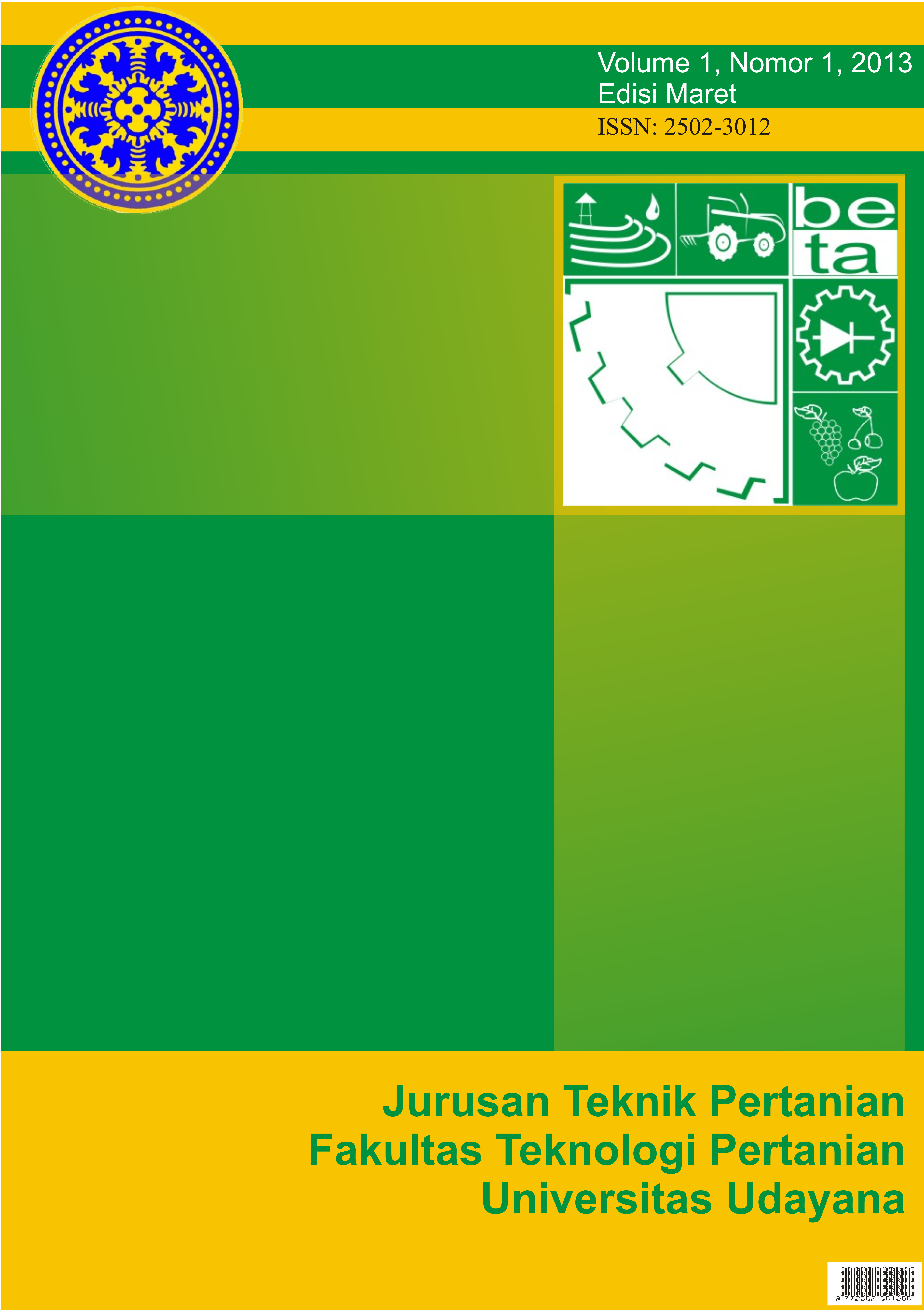Pengaruh Pencucian Kubis (Brassica oleracea var capitata) Menggunakan Larutan Klorin dan Pengemasan Individu Wrapping-Plastic Film Terhadap Kehilangan Berat dan Kualitas Selama Penyimpanan
Abstract
Tujuan dari penelitian ini adalah untuk menentukan konsentras iklorin yang optimum untuk mencuci kubis dan pengaruh kemasan wrapping plastic film. Percobaan melibatkan rancangan acak lengkap dengan dua faktor. Faktor pertama adalah desinfeksi kubis menggunakan konsentrasi yang berbeda dari larutan klorin dalam air yang terdiri dari 0 ppm, 50 ppm, 100 ppm dan 150 ppm. Faktor kedua adalah plastik pembungkus dengan perlakuan yang terdiri dari a) membungkus kubis menggunakan plastic film LDPE ( low densitty polyethylene ) dan b) tanpa pembungkus. Percobaan diulang tiga kali dengan tiga kepala
kubis (3,40-3,85 kg) untuk setiap unit eksperimen. Kontrol disiapkan tanpa perlakuan sebagai pembanding. Temuan signifikan dari percobaan adalah bahwa kubis didesinfeksi menggunakan 50 ppm larutan klorin dan pembungkus dengan peregangan film plastic memiliki susut berat lebih rendah, dan nilai terendah dari perubahan nilai Red Green Blue.dari penilaian kesegaran dan kerenyahan visual mendapatkan nilai yang lebih tinggi dibandingkan dengan 0, 100 dan 150 ppm, serta dari kubis kontrol.
The aim of of this study was to determine the optimum concentration of chlorine to wash the cabbage and the effect of plastic film wrapping- for packing the cabbage. The experiment involved the completely randomized design with two factors. The first factor was disinfection of the cabbages using different concentrations of chlorine solution in water which was consisted of 0 ppm, 50 ppm, 100 ppm and 150 ppm. The second factor was plastic-wrapping treatments which was consisted of a wrapping the cabbages using stretching plastic film LDPE, and b) without wrapping. The experiment was replicated three times with three heads of cabbages (3.40-3.85 kgs) for each experimental unit. Controls were prepared without any treatments as comparison. The significant finding of the experiment was that the cabbages disinfected using the 50 ppm chlorine solution and wrapping with stretching plastic film has lower weight loss, and the lowest change of value (indicated by the changes of Red, Green and Blue or RGB colors), and the highest score of freshness and crunchiness compared to the 0, 100 and 150 ppm, as well as to the control cabbages
Downloads
References
Beauchat, L.R.2000. Use of Sanitizer in Raw Fruit and Vegetables Procesing Minimaly
Processed Fruit and Vegetbles. Fundamental Aspect and Aflications. Gaithersburg, MD. Aspen. 2000:63-78
IFPA ( Interntional Fresh-cut Produce Association). 2001. Food Safety Guidelines for the Fresh-cut Produce Industry. 4th (ed). Alexsandria,VA:IFPA
Pantastico, 1997. Postharvest Handling and Utilization Of Tropicalubtropical Fruits and vegetable. Terjemahan kamariyani dalam fisiologi pascapanen, penanganan dan pemaanfaatan buah-buahan tropika dan sub tropika. Gajah mada press, Yogyakarta.
Sapers, G.M 2001. Efficacy of Washing and Sanitizing Method for Disinfection of Fresh Fruit and Vegetable Products.
WHO ( Word Health Organization ). 1998. Food Safety Issues surface Decontamination Of Fruit and Vegetable Eaten Raw. A Review. Word Health Organization , Geneva.












 Jurnal BETA (Biosistem dan Teknik Pertanian)
Jurnal BETA (Biosistem dan Teknik Pertanian)


